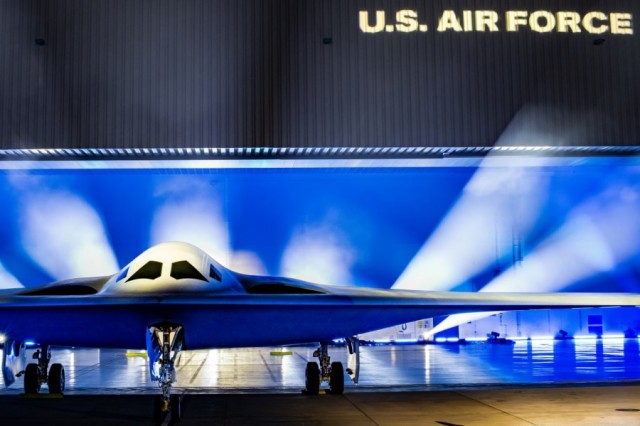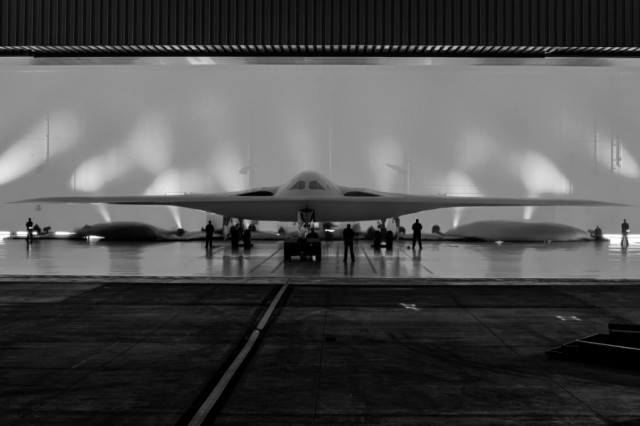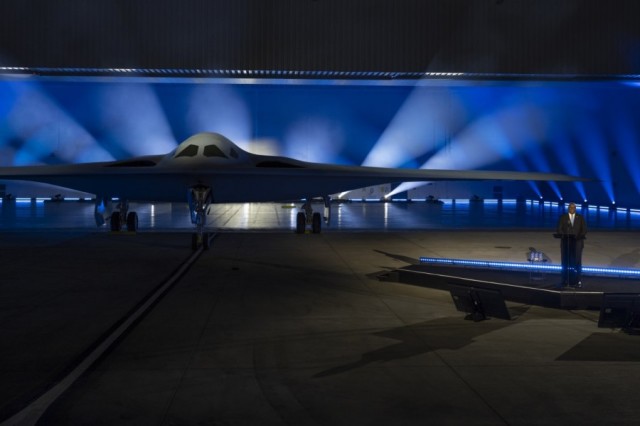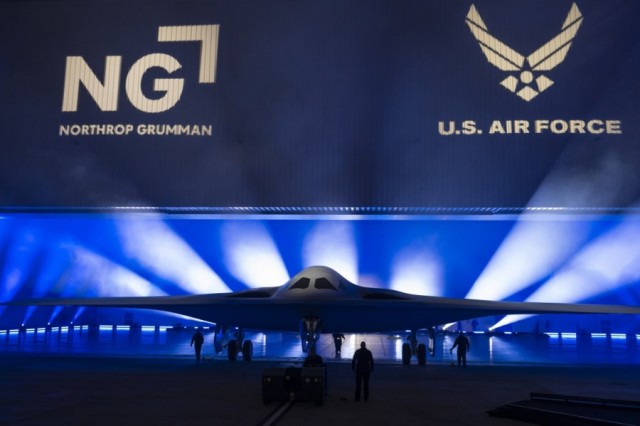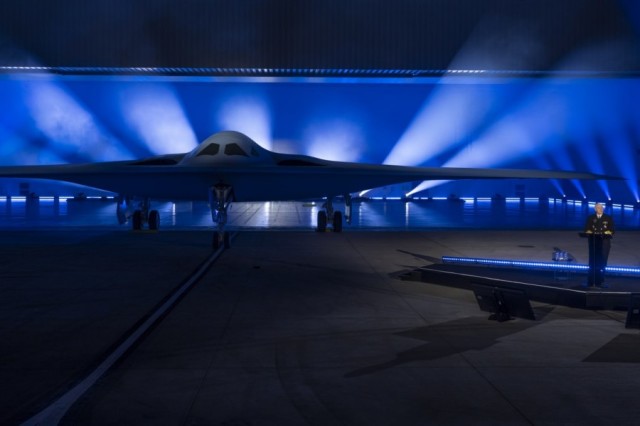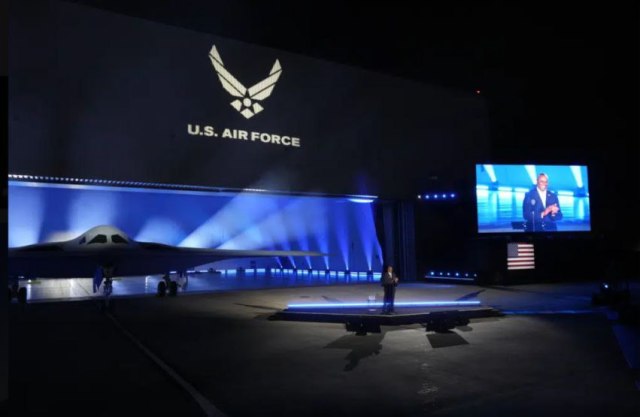On the evening of December 2, 2022, an official ceremony of public presentation of the first prototype of the new American unobtrusive strategic bomber B-21 Raider, the actual rollout of which was made a few days earlier, took place at the Plant 42 enterprise of Northrop Grumman Corporation in Palmdale (California). US Secretary of Defense Lloyd Austin attended the ceremony with a strictly limited number of people allowed. The first flight of the first prototype of the B-21 is scheduled for 2023.
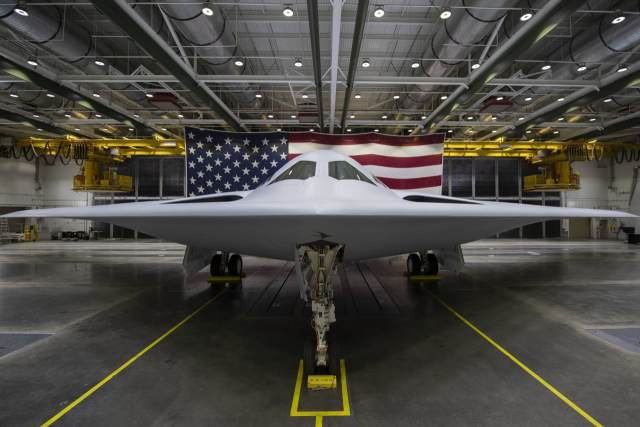
Official photo of the first built flight prototype of the new American unobtrusive Northrop Grumman B-21 Raider strategic bomber at the Plant 42 enterprise of Northrop Grumman Corporation in Palmdale (California) (c) Northrop Grumman US Secretary of Defense Lloyd Austin said at the ceremony:
"This is not just another plane, this is the embodiment of America's determination to defend the republic that we all love... We make it clear to any potential adversary that the risk and cost of aggression far exceed any possible successes... No long-range bomber can match its capabilities. Fifty years of achievements in the field of inconspicuous technologies have gone into the creation of this aircraft. Even the most advanced air defense systems will not be able to detect the B-21 in the sky. The Raider is designed to deliver both conventional and nuclear weapons with colossal precision."
Recall that the program to create a promising unobtrusive American strategic bomber was launched in the 2000s as the Next-Generation Bomber (NGB), then suspended, and resumed in 2010 as the Long Range Strike Bomber (LRS-B). In July 2014, the U.S. Air Force issued an official request for proposals to Northrop Grumman. From the very beginning of work on NGB, and then on LRS-B, there were two competing aircraft projects - one by Northrop Grumman Corporation, and the other by the Boeing and Lockheed Martin consortium, while both projects were conceptually similar to the unobtrusive Northrop Grumman B-2A Spirit bomber, representing a subsonic aircraft according to the "flying wing" scheme.".
On October 27, 2015, the US Department of Defense selected the Northrop Grumman project under the LRS-B program and signed an initial contract with it for the development of an aircraft worth $ 21.4 billion. The total cost of R&D and supplies under the program is estimated at $80-90 billion. In 2016, the promising aircraft received the B-21 index and the name Raider, and was designated as the "sixth generation bomber".
It is known that by the beginning of 2022, six B-21 flight prototypes were under construction at Plant 42 Northrop Grumman in Palmdale. The head prototype of the aircraft has been under construction since 2019, was completed in March 2022 and began factory ground tests in a special workshop, and now it has been pumped out and demonstrated publicly.
The start of delivery of the first production B-21 aircraft is now expected in 2026-2027. Initial Operational Readiness (IOC) is expected to be achieved by 2030. The plans of the US Air Force provide for the purchase of 100 to 200 B-21 aircraft in order to replace them with strategic bombers B-1B, and then B-2A. Starting from fiscal year 2025, it is planned to allocate annual allocations for the purchase of six to seven B-21 aircraft, with the possibility of increasing to 15 aircraft per year in the 2030s. Thus, the US Air Force plans to have a mixed fleet of strategic bombers from two types of aircraft in the future - the new B-21 Raider and upgraded Boeing B-52 Stratofortress bombers. At the start of the LRS-B program, the target purchase price of one production aircraft was planned at $ 550 million, but currently the planned purchase price of the aircraft is not reported.
Judging by the published information and the first prototype demonstrated on December 2, the B-21 ideologically repeats the inconspicuous subsonic bomber-the Northrop Grumman B-2A "flying wing", but has slightly smaller dimensions - the wingspan is estimated at 45 meters against 52 meters in the B-2A. At the same time, compared to the B-2A, the new aircraft has a larger wing extension and deeply recessed engine air intakes. New generation radio-absorbing coatings are used.
According to known data, the B-21 is equipped with two new Pratt & Whitney engines based on the F135 engine (F-35 fighter) and should have a maximum payload mass of 13600 kg, although its armament compartments will be larger in volume than the B-2A. The B-21 aircraft has an "open architecture" and modularity of systems, and in the future it is possible to create its unmanned version.
name/file/img/oficialnaya-fotografiya-pervogo-postroennogo-letnogo-opytnogo-obrazca-novogo-ame-waxdgc8h-1670093281.t.jpg "title="Official photo of the first built flight prototype of the new American unobtrusive Northrop Grumman B-21 Raider strategic bomber at the Plant 42 enterprise of Northrop Grumman Corporation in Palmdale (California), taken outside the workshop, 11/29/2022">
The official photo of the first built flight prototype of the new American unobtrusive strategic bomber Northrop Grumman B-21 Raider at the Plant 42 enterprise of Northrop Grumman Corporation in Palmdale (California), taken outside the workshop, 11/29/2022 (c) Northrop GrummanFootage of the official presentation of the first built flight prototype of the new American unobtrusive Northrop Grumman B-21 Raider strategic bomber at the Plant 42 enterprise of Northrop Grumman Corporation in Palmdale (California), 02.12.2022 (c) via Telegram channel Nuclear Petrel Maxim
